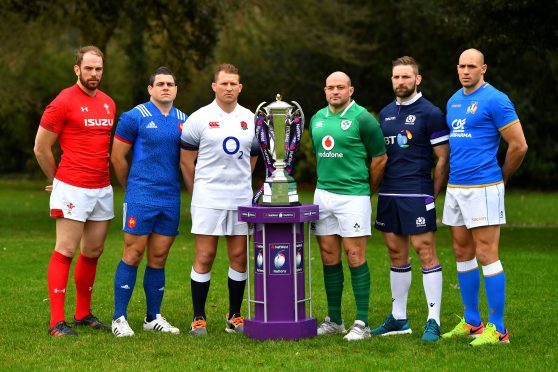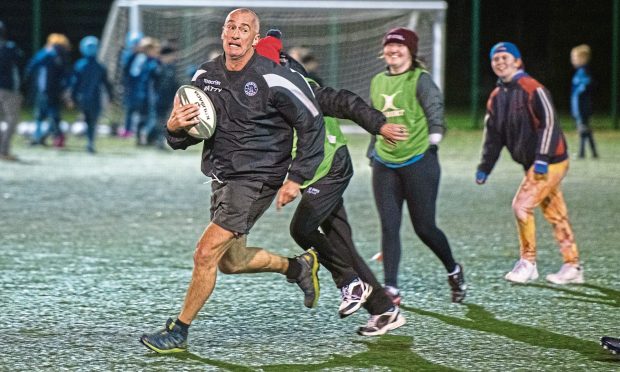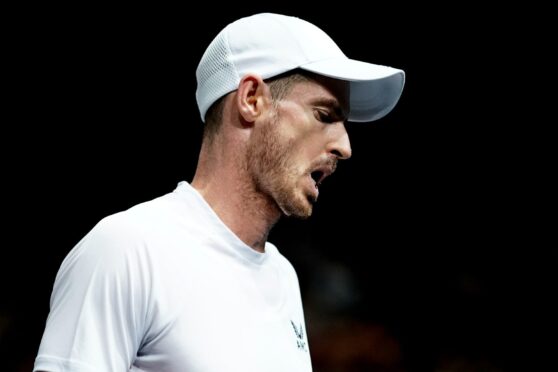What really is there to do in this bleak winter hinterland between New Year and Easter? Veganuary or even, horror, Dry January? Valentine’s Day? St Patrick’s Day maybe?
There is no choice, surely, than to fully embrace the NatWest 6 Nations?
Thousands do. Officially, it seems, the annual rugby union championship is the most popular sporting tournament on the planet. The 6N (in the now accepted twitter shorthand) has the biggest average live audience of any sporting event, even over America’s behemothic NFL.
It has the sixth highest aggregate annual audience in sport, from just 15 games (most other sporting events have four times that many). It’s actually staggering.
There’s a fair argument that the doughty old 6N in 2018 now represents the best of rugby union, excepting that lot in black who do that silly dance before games.
England may edging the All Blacks as the world’s best team, Ireland have reasonable designs on both of them, Scotland are resurgent, Wales are still strong (possibly), Italy are emergent (a stretch, but maybe). France, who the hell knows?
So as we sell out every stadium from Edinburgh’s west end and Dublin’s leafy D4 to the banks of the Taff and HQ at TW1, from windswept Saint-Denis to the idyllic Foro Italico, it stands to be a classic 6N.
Hopefully. Here’s how the teams lie going into the greatest annual international sporting championship there is.
ENGLAND
With the last two championships won, Eddie Jones has got England’s fractious rugby community together, ending the assumption that they usually find a way to mess up their natural advantages.
England can mud-wrestle if needed, or play with attacking abandon (Scots wince over Twickenham last year). They are setpiece-secure, they have a tactical fulcrum in Owen Farrell. Defensively, and at impact, they are often devastating.
In terms of injuries, despite Jones’ laughable claims, they’re fine. They’re missing just one indispensable player – Billy Vunipola – and one very-good-but-not-crucial one in Elliot Daly.
The banana skins? Jones is at the stage where his schtick starts to grate rather than amuse, and things start to go wrong. It’s happened almost everywhere he’s been in his coaching career. Away games in Edinburgh and Paris back to back in week three and four look testing.
If England get to Twickenham and Super Saturday needing to beat Ireland to win the Grand Slam, they’ll deserve the favourites tag they have before a ball is kicked on St Paddy’s Day.
IRELAND
The admirable Joe Schmidt – the polar opposite to the silly mind games of Jones and Warren Gatland – may still be the best tactician in the championship, and has patiently constructed a huge strength in depth in his squad. The Irish have managed their men well to arrive at the championship with fewer casualties than anyone.
Ireland are powerful upfront, one of the few able to match England physically, arguably the strongest in the scrummage and aggressive at the breakdown. The arrival of Jacob Stockdale and Jordan Larmour this championship signals a new exciting edge to Ireland’s back play.
They will always sweat on Jonny Sexton’s health, but their draw is definitely favourable, getting the French first and having Wales and Scotland at home before they go for the “decider”; the odds are it’s more likely they’ll get there unbeaten than England will.
But winning at Twickenham with the Grand Slam on the line? That’s a toughie.
FRANCE
In their great traditions, France decided to ditch the Guy Noves era nine months after they should have and sacked him just a month before the 6N. The less-than-inspiring Jacques Brunel has taken over, and ditched much of their under-achieving team that won just three games in 2017.
But what if those guys were actually the best available to the damaged shell of French rugby? Is not picking the brilliant Louis Picamoles, and giving the 10 jersey to a 19-year-old – however promising he looks – a sane sort of answer to their problems?
If this were any other team than France, you’d definitely think no. But it’s still hard to imagine that with so little preparation that for the first two rounds they’ll be ready for Ireland and Scotland.
Perhaps against Italy in Marseille in week three, and then watch them have a crack at England. But I don’t see France improving much on last year’s miserable campaign.
ITALY
Conor O’Shea has improved Italy’s rugby across the board – specifically technique, fitness and their two pro teams. But they were at such a low ebb when he arrived it was hard not to.
There are decent players dotted around but they are still massively over-reliant on their ageing captain Sergio Parisse. Ironically, it may be that when their greatest player is finally gone that the Italians finally get their collective act together and stop looking to him to do everything.
They’d have preferred France, or Wales, or anyone first rather than England. Marseille may be their biggest chance if France start disastrously. If not, it’s the usual old hope they can beat Scotland, perhaps not mindful that the Scots have beaten them averaging nearly 35 points a game in their last four meetings.
WALES
Is it time up for Wales’ great years under the arch-pragmatist Warren Gatland? The Welsh have been decimated by injuries, seven or eight frontline starters including their two most outstanding players, Taulupe Faletau and Jonathan Davies.
Gatland’s always found a way to paper over any cracks before, and the Scarlets’ successes in club rugby are the other straws the Welsh nation is clutching.
Wales are talking up their front row as their primary strength, but props don’t win you many 6N games. Some of their new names are good players, but there’s surely no way Steff Evans or Hadleigh Parkes or Rhys Patchell gets a game if they’ve got everyone to pick from.
And last year suggested that even a fully fit Wales were in a slow decline. The first game – when they’re at the weakest in terms of selection – is absolutely crucial for them.
SCOTLAND
It’s a knife edge. Win in Cardiff – something Scotland have not done in 16 years – and great things can happen for the Scots. Lose, and they might be fortunate to win two games.
With Wales so damaged, the opening game is a massive opportunity for Scotland’s buoyant autumn to bounce into the spring. Potentially they have the best backline in the championship, and their tempo of game, if allowed to develop, can overwhelm the opposition.
Resilience is a question, and physical power. Almost everything – barring one inside pass from Stuart Hogg against New Zealand – fell Scotland’s way in the autumn. How will they deal with the inevitable crises of a 6N? Will they absjectly fold like they did at Twickenham last year?
They’re probably not ready to challenge for a title, but they should at least give notice of one to come. A backward step will be hugely demoralising.
Steve’s prediction: 1 England (no Grand Slam) 2 Ireland 3 Scotland 4 France 5 Wales 6 Italy.


